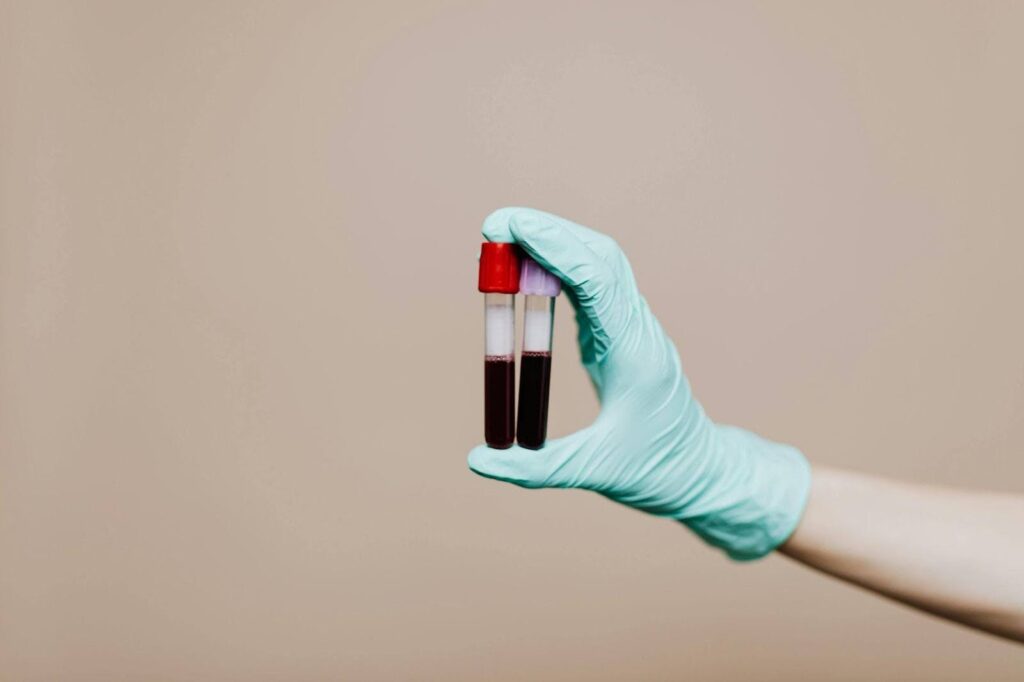Have your easy runs started to feel hard? Struggling to catch your breath, even on recovery days? You might be dealing with more than just training fatigue. Many endurance athletes—especially runners—experience the effects of low iron, often without realizing it.
Iron plays a crucial role in how your body transports oxygen, produces energy, and recovers from training. But when your iron levels dip too low, the symptoms can sneak up on you—and seriously undermine your performance.
In this post, I’ll walk you through the most common lack of iron symptoms (aka iron deficiency!), why low iron in runners and low iron in athletes is so common, and how to increase iron levels through nutrition and smart supplementation.

Why Iron Matters for Endurance Athletes
Iron is more than just a mineral—it’s a cornerstone of your body’s ability to deliver oxygen, generate energy, and support recovery.
When you train, your muscles need a constant supply of oxygen to perform. Iron enables this by helping produce hemoglobin, the protein in red blood cells responsible for oxygen transport.
It also supports enzymes involved in energy production and immune defense—critical systems that get taxed during high-volume or high-intensity training blocks.
For endurance athletes, especially those logging long runs, bike rides, or swim workouts, iron needs are significantly higher than average.
But here’s the catch: your training also increases the likelihood of iron depletion. That’s because you lose iron through sweat, gastrointestinal bleeding (common in ultra-endurance events), and something called foot-strike hemolysis, where the repetitive pounding of your feet can destroy red blood cells.
Here are some of the biggest contributors to low iron in athletes:
- Increased losses through sweat and foot-strike hemolysis: Every sweaty session or run contributes to incremental iron loss.
- Higher turnover from training stress: Muscle breakdown and repair processes use up iron.
- Menstruation: People with periods lose blood (and therefore iron) every cycle—sometimes significantly.
- Vegetarian or vegan diets: Plant-based athletes often consume mostly non-heme iron, which is harder to absorb than heme iron from animal sources.
- Low energy availability: Athletes who underfuel or restrict certain food groups may not meet basic iron requirements.
The combination of high demand and high loss makes it easy for even experienced athletes to run low on iron without realizing it. And since performance declines gradually, many athletes don’t connect the dots until the deficiency is advanced.
Symptoms of Low Iron in Endurance Athletes
Iron deficiency doesn’t always scream at you—it often whispers. And because endurance athletes expect to feel tired sometimes, it’s easy to overlook the symptoms as just “training fatigue” or a bad day.
But there’s a difference between being tired and being depleted. If you’re noticing persistent fatigue, reduced motivation, or subpar performance without any changes in your training plan, it’s time to consider whether iron could be the culprit.
Here are some of the most common lack of iron symptoms in athletes:
- Fatigue that doesn’t improve with rest: You sleep well and reduce mileage, but still feel worn down.
- Sluggish runs, even at an easy pace: Workouts that used to feel energizing now feel like a slog.
- Shortness of breath during moderate efforts: Your perceived effort is higher, even though the pace hasn’t changed.
- Elevated resting heart rate: Your body is working harder to compensate for low oxygen delivery.
- Brain fog, trouble focusing, or irritability: These symptoms can appear even before physical ones.
- Poor recovery between sessions: You feel sore longer or need more rest days than usual.
- Craving ice or non-food items (pica): A lesser-known but real symptom of iron deficiency.
- Pale skin or dark circles: A visual cue that can sometimes be linked to low red blood cell levels.
These symptoms of low iron are your body waving a red flag. If they linger despite good training habits, it’s time to investigate further.
How Low Iron Impacts Performance in Runners and Athletes
Athletes often train through fatigue, trusting that things will get better with more rest, fueling, or motivation. But when low iron in runners is the cause, no amount of positive thinking will restore your performance—because it’s a blood chemistry issue, not a mindset problem.
Iron deficiency limits your body’s ability to deliver oxygen to working muscles. Even if you’re doing everything else right—training smart, recovering well, eating enough calories—your performance will plateau or decline if iron levels are suboptimal.
Here’s what low iron in athletes can often lead to:
- Lower VO₂ max: Your ability to use oxygen efficiently takes a direct hit.
- Reduced time to exhaustion: You fatigue earlier in workouts or races.
- Decreased training capacity: Long sessions feel harder, and you may avoid pushing yourself.
- Slower recovery: Muscles take longer to repair and adapt between workouts.
- Higher risk of injury or illness: Immune function is closely tied to iron status.
This is especially concerning for runners, who often rely on red blood cell-rich aerobic capacity to power through long miles or speed sessions. If you’re training consistently but falling short of your goals—or feeling unusually wiped out—low iron in runners should absolutely be considered.

Testing for Iron Deficiency: What Athletes Should Know
If you suspect low iron, don’t guess—test. Bloodwork is the only way to confirm what’s going on.
Ask your doctor or sports nutrition provider to test:
- Ferritin (iron storage protein)
- Hemoglobin
- Transferrin saturation
- Serum iron
For athletes, ferritin is especially important. While labs may consider anything over 15–30 ng/mL “normal,” many endurance athletes start experiencing symptoms when levels dip below 30–50 ng/mL.
Ideally, athletic ferritin levels should be greater than 50 ng/mL for optimal performance.
Nutrition Strategies to Increase Iron Levels
Improving iron status through food is absolutely possible—especially with a little strategy. But it takes more than just eating a spinach salad and calling it a day.
First, it’s important to understand the types of iron:
- Heme iron: Found in animal products like beef, poultry, and seafood. It’s easily absorbed and less affected by other dietary factors.
- Non-heme iron: Found in plant foods like lentils, tofu, and leafy greens. It’s more sensitive to inhibitors and requires pairing with absorption boosters.
Next, you can boost iron absorption by:
- Including vitamin C: Just 50 mg of vitamin C (about the amount in half a bell pepper) can significantly increase non-heme iron absorption.
- Using cast-iron cookware: Cooking acidic foods like tomato sauce in cast iron can add bioavailable iron to your meal.
- Spacing out calcium: Dairy and calcium supplements can block iron absorption when consumed together with iron-rich meals.
To increase iron levels, plan meals that combine plant or animal sources of iron with absorption-enhancing pairings—and time dairy or tea/coffee at least an hour apart from iron-rich meals.
Iron Rich Foods for Runners
Here’s a more detailed look at how to get iron from food every day, especially if you’re training hard.
Heme Iron Sources (animal-based)
- Beef, lamb, venison: Among the most concentrated sources of heme iron.
- Chicken thighs, turkey legs: Dark meat has more iron than white.
- Organ meats (like liver): Extremely rich in iron and other micronutrients.
- Shellfish: Clams, mussels, and oysters are powerhouses.
Non-Heme Iron Sources (plant-based)
- Lentils, chickpeas, and beans: Reliable staples for plant-based athletes.
- Tofu and tempeh: Also high in protein and versatile.
- Pumpkin, sesame, and hemp seeds: Great for snacks or added to meals.
- Spinach, kale, Swiss chard: Combine with citrus or bell peppers to boost absorption.
- Fortified cereals: Easy way to get iron at breakfast.
Smart Pairings for Absorption
- Oatmeal + strawberries or orange slices
- Lentil curry + bell peppers or tomato
- Spinach salad + vinaigrette and citrus segments
- Tofu stir-fry + broccoli and pineapple chunks
These meal combinations don’t just increase iron intake—they optimize it for endurance athletes’ needs.
Should You Supplement?
Sometimes food alone won’t cut it—especially if your levels are already low or you’re training at high volumes. That’s where supplements come in.
You might consider supplementing if:
- Your ferritin is below 50 ng/mL and you’re experiencing symptoms.
- You’ve tested low on iron multiple times, despite dietary changes.
- You follow a vegan or vegetarian diet and struggle to meet your needs.
Common forms of iron supplements include:
- Ferrous sulfate: Effective and widely available, but may cause nausea or constipation.
- Ferrous bisglycinate: Gentler on digestion, often a good option for athletes with sensitive stomachs.
- Liquid iron: Useful for those who can’t tolerate pills.
Tips for taking supplements:
- Take on an empty stomach or with a small amount of fruit juice.
- Avoid calcium, coffee, or tea within two hours of taking iron.
- Re-test ferritin after 6–8 weeks to track your progress and avoid overshooting.
Always supplement under guidance—ideally with support from a sports dietitian or healthcare provider familiar with athlete needs.
If you want to learn more about supplementation, read our blog post The Ultimate Guide to Sports Nutrition Supplements for Endurance Athletes.
Tired, Foggy, and Frustrated? It Could Be Low Iron
If your body feels like it’s failing you, it’s easy to assume you’re not training hard enough—or that something’s wrong with your motivation. But often, it’s your physiology, not your mindset.
You’re not lazy, and you’re not losing your edge. You might just be low on iron.
Low iron in runners is incredibly common, especially for women and plant-based athletes. Recognizing the signs is the first step toward feeling strong again.
If you’ve been running on empty or second-guessing your fueling strategy, you’re not alone—and you don’t have to figure it out by trial and error.
With my 1:1 coaching program, I’ll help you connect the dots between your nutrition, training, and lab work so we can pinpoint what your body truly needs—especially when it comes to iron and energy.
Together, we’ll build a realistic, evidence-based plan that fits your life and supports your performance goals without restriction or overwhelm.
Ready to take the guesswork out of fueling? Apply for coaching here.
Be The First To Comment